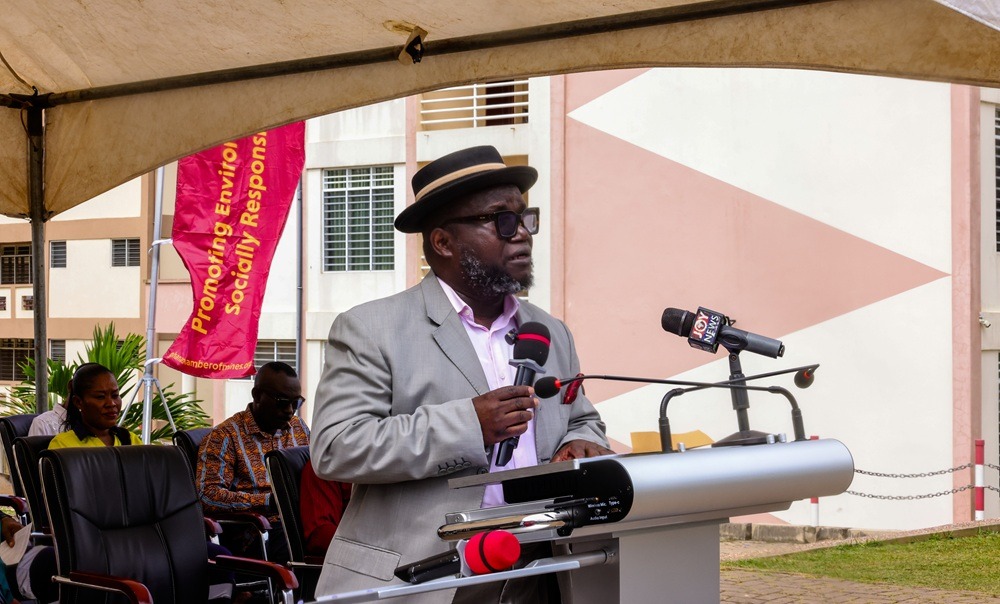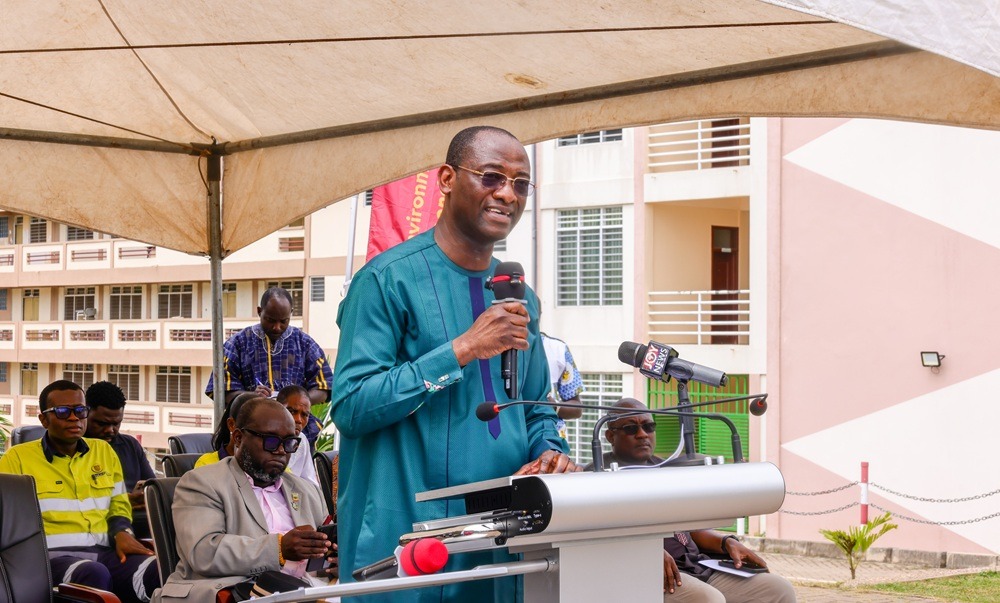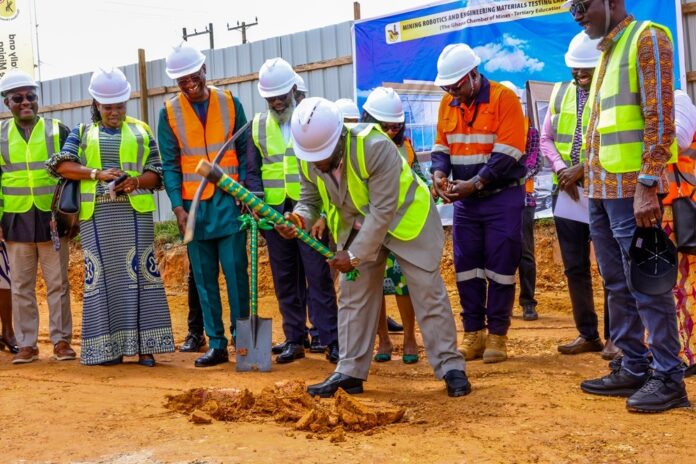The Ghana Chamber of Mines has taken a major step toward advancing mining innovation and skills development with the sod cutting for a US$1.25 million Artificial Intelligence (AI), Robotics and Materials Testing Laboratory at the University of Mines and Technology (UMaT), Tarkwa.
The ceremony, held on Friday, 14th November 2025, marks a significant milestone in strengthening industry–academia collaboration and positioning Ghana as a mining technology hub in West Africa.
The fully funded project forms part of the Chamber’s Tertiary Education Fund (TEF), a strategic initiative aimed at modernising mining education, boosting local content, and supporting research that drives responsible and sustainable mining practices.

Speaking at the event, CEO of the Ghana Chamber of Mines, Ing. Dr. Kenneth Ashigbey, described the project as a “strategic investment in Ghana’s future,” noting that the facility would transform how mining is taught and practiced.
He highlighted mining’s continued contribution to the national economy, including GH₵17.7 billion in fiscal payments in 2024, representing a 51.2% increase over the previous year, as well as a 76.7% rise in mineral royalties.
According to him, the new centre will enable Ghana to shift from a “buy local” approach to a forward-looking industrial strategy that allows the country to “make local, innovate local, and certify local.”
The laboratory is expected to provide advanced materials testing services, enabling local manufacturers to produce and certify mining inputs domestically—reducing dependency on foreign labs and promoting industrial growth.

Chairman of TEF, Mr. Fred Attakumah, outlined the Fund’s achievements under its first phase (2019–2024), including:
-
Over US$1.3 million invested in educational infrastructure
-
170 undergraduate bursaries
-
25 research grants for lecturers
-
24 postgraduate students funded for mineral engineering research
-
78 industrial attachments
-
Expansion of digital learning through SMART boards and e-learning systems
He said the new laboratory will nurture the next generation of mining professionals skilled in automation, robotics, artificial intelligence and data analytics—technologies driving the future of global mining.
Both leaders noted that the facility will support research and innovation in mine safety, predictive maintenance, ore processing, automated operations, and environmental protection. It is also expected to position UMaT as a central driver of national industrialisation.
Mr. Attakumah encouraged students and researchers to leverage the centre to develop practical local solutions to challenges such as illegal mining, environmental degradation and operational inefficiencies.
The sod-cutting ceremony signals the start of what the Chamber describes as a transformative journey—one that will strengthen human capital, accelerate industrialisation and enhance Ghana’s global competitiveness in mining technology



